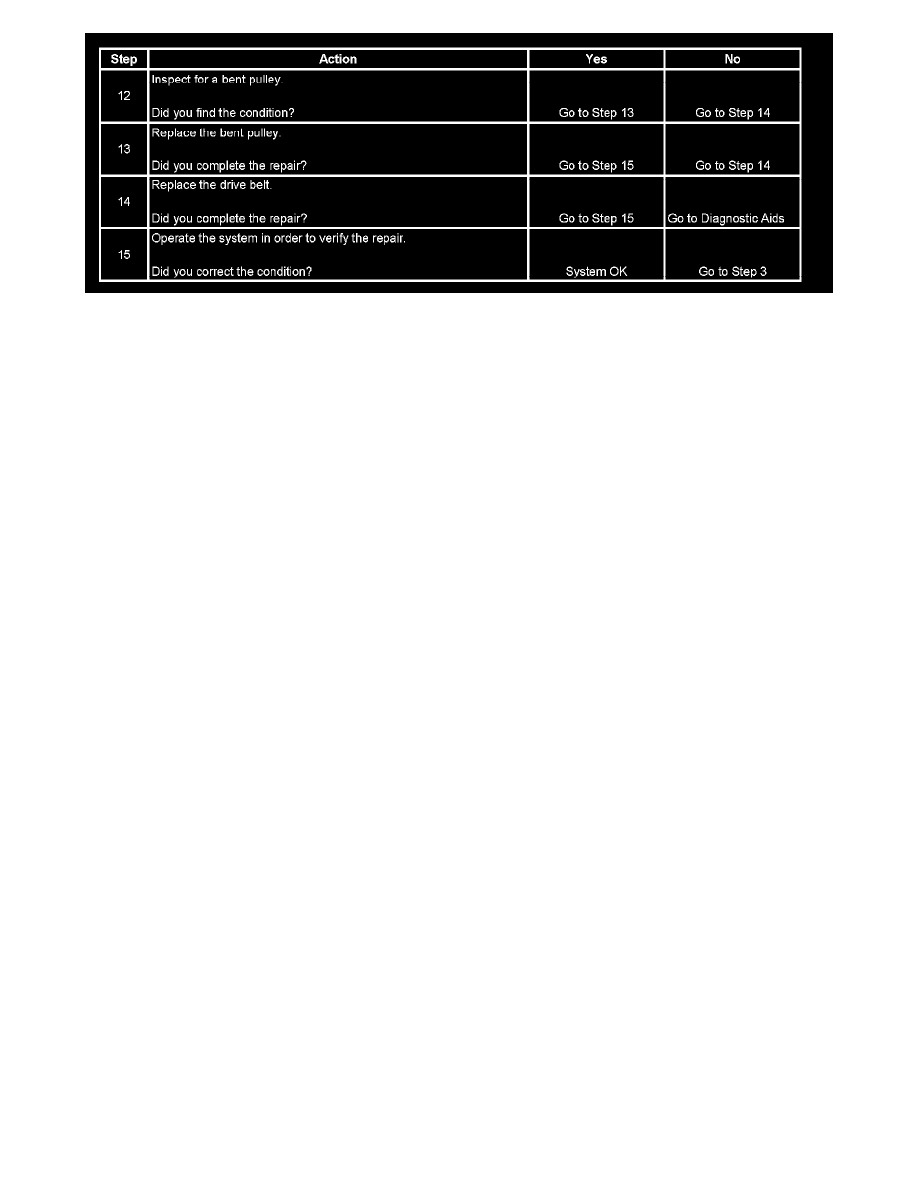Cobalt L4-2.4L VIN B (2006)

Step 12 - Step 15
The numbers below refer to the step number on the diagnostic table.
2. The noise may not be engine related. This step is to verify that the engine is making the noise. If the engine is not making the noise do not proceed
further with this table.
3. The noise may be an internal engine noise. Removing the drive belt and operating the engine for a brief period will verify the noise is related to the
drive belt. When removing the drive belt, the water pump may not be operating and the engine may overheat. Also DTCs may set when the engine
is operating with the drive belt removed.
4. Inspect all drive belt pulleys for pilling. Pilling is the small balls, pills, or strings in the drive belt grooves from the accumulation of rubber dust.
6. Misalignment of the pulleys may be caused by improper mounting of the accessory drive component, incorrect installation of the accessory drive
component pulley, or the pulley bent inward or outward from a previous repair. Test for a misaligned pulley using a straight edge in the pulley
grooves across 2 or 3 pulleys. If a misaligned pulley is found, refer to that accessory drive component for the proper installation procedure for that
pulley.
10. Inspecting of the fasteners can eliminate the possibility that a wrong bolt, nut, spacer, or washer was installed.
12. Inspecting the pulleys for being bent should include inspecting for a dent or other damage to the pulleys. This damage would prevent the drive belt
from not seating properly in all of the pulley grooves or on the smooth surface of a pulley when the back side of the belt is used to drive the pulley.
14. Replacing the drive belt when the belt is not damaged or there is not excessive pilling will only be a temporary repair.
Drive Belt Excessive Wear Diagnosis
Drive Belt Excessive Wear Diagnosis
Diagnostic Aids
Excessive wear on a drive belt is usually caused by an incorrect installation or the wrong drive belt for the application.
Minor misalignment of the drive belt pulleys will not cause excessive wear, but will probably cause the drive belt to make a noise or to fall off.
Excessive misalignment of the drive belt pulleys will cause excessive wear but may also make the drive belt fall off.
Test Description
